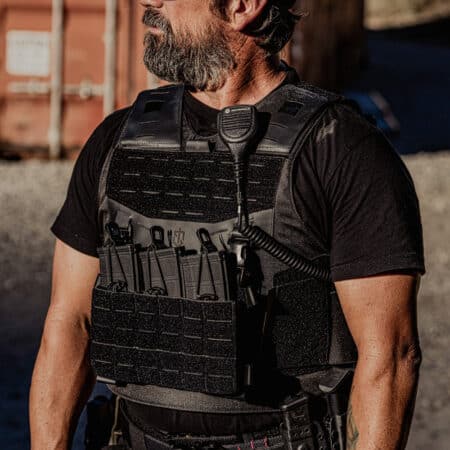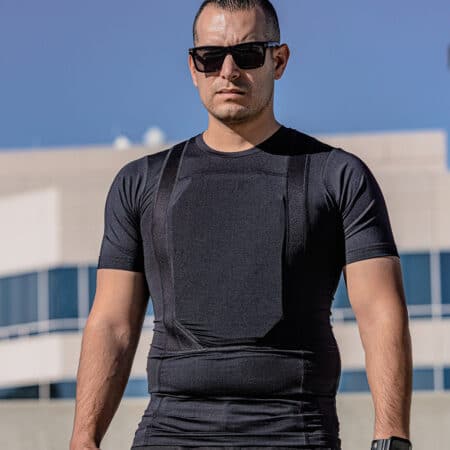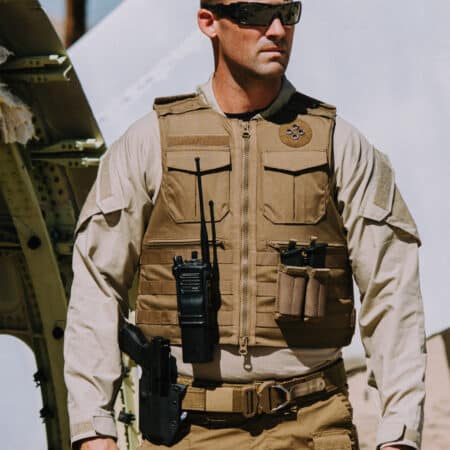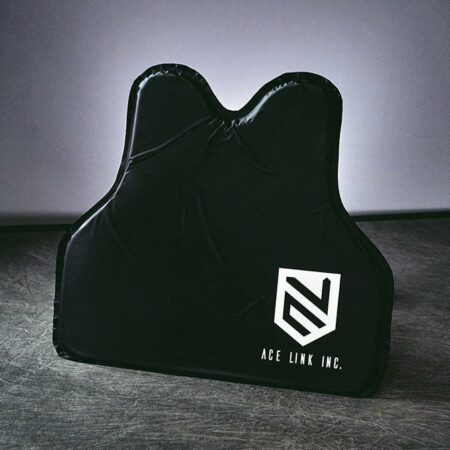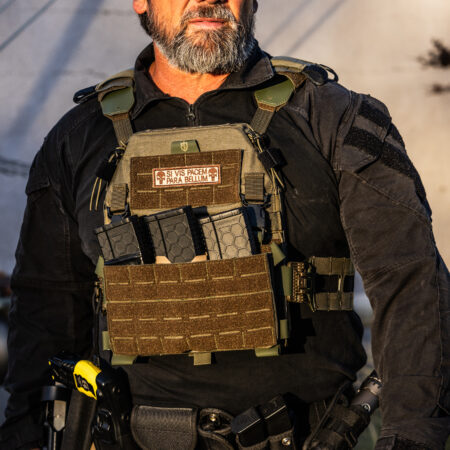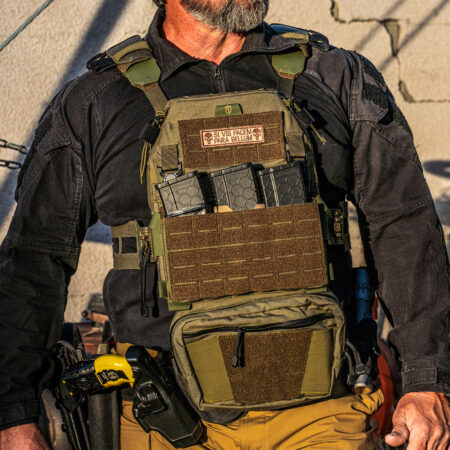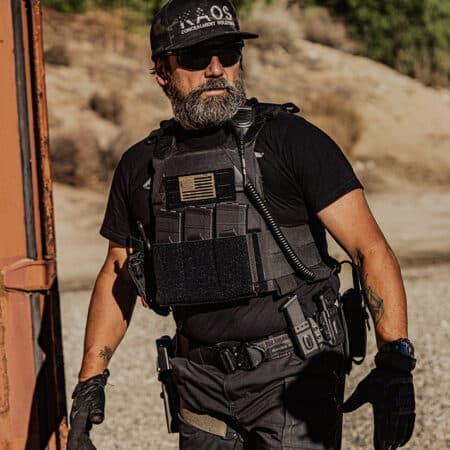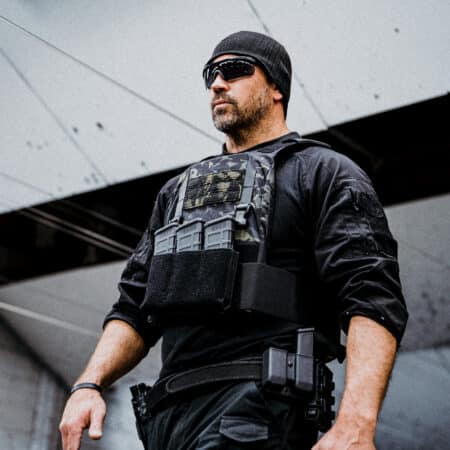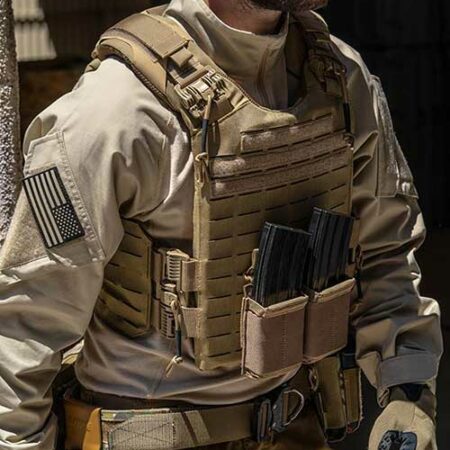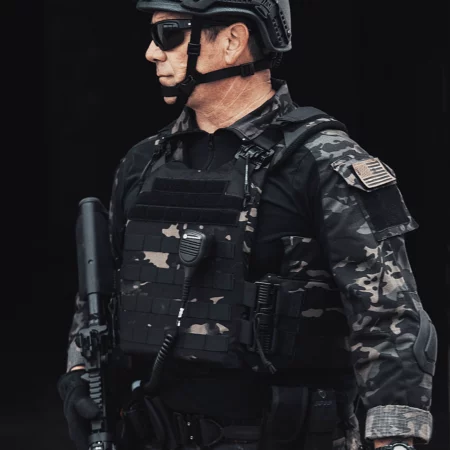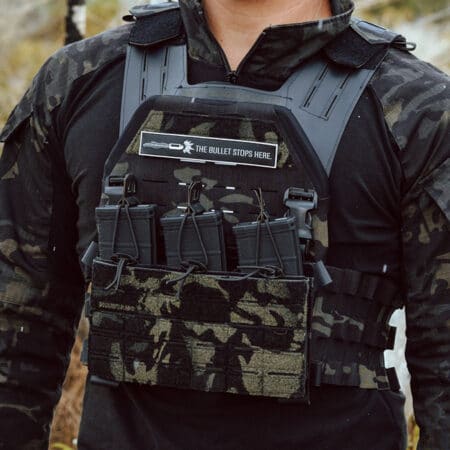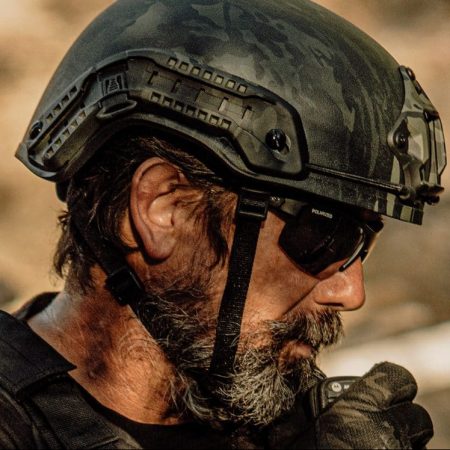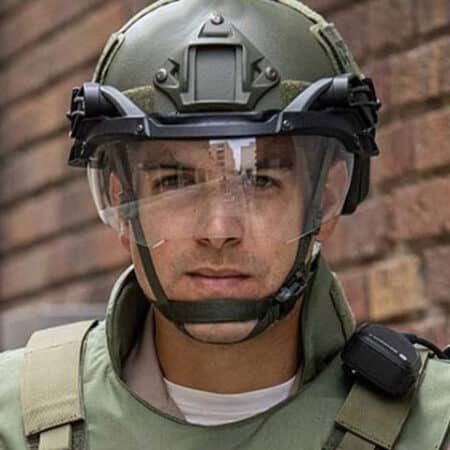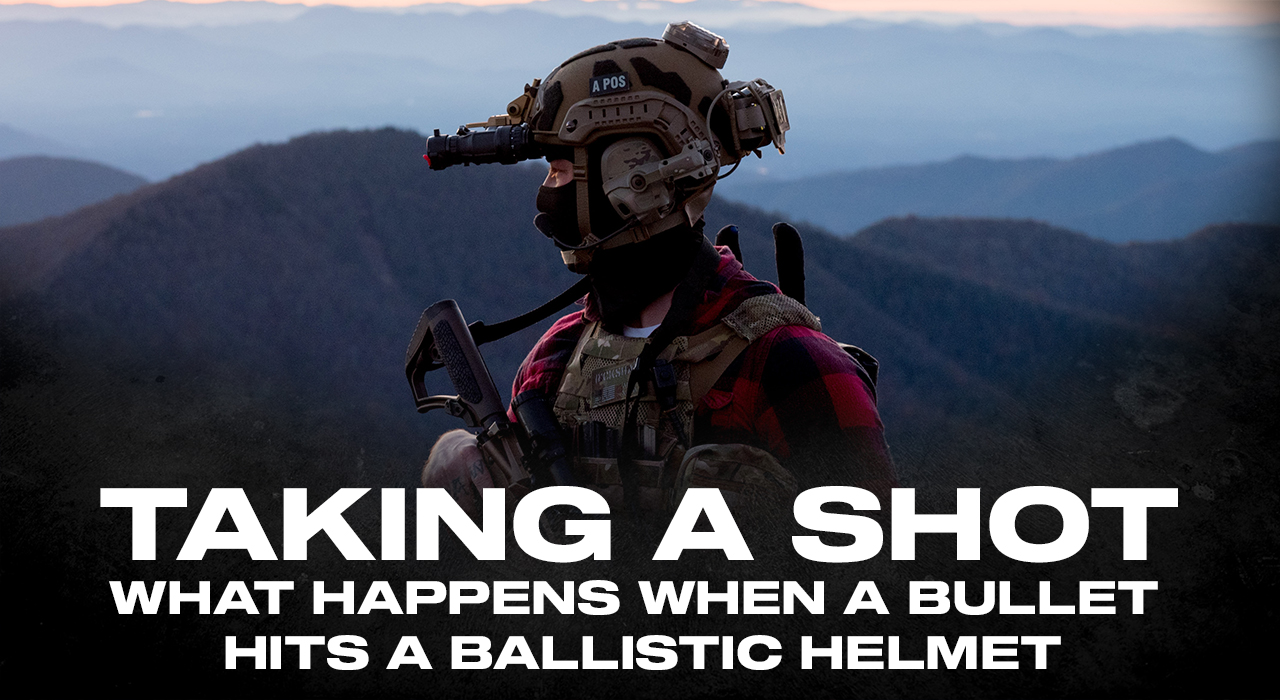A common misconception that has perhaps grown because of pop culture and video games is that you can take a shot on a ballistic vest and still keep running as if nothing happened. Though a ballistic vest does stop a bullet from penetrating your body, its energy is still transferred to you. This can feel like getting punched extremely hard in the body. It can make it difficult to breathe, and sometimes even break ribs.
Now, if taking a shot feels so bad on your chest, imagine how it would feel on your head. So, let’s talk about that.
Key Takeaways
- Bullet impact on a ballistic helmet transfers force to the head and neck.
- The material of a helmet determines its ability to absorb impact energy.
- Helmet shape and design are crucial in preventing bullet penetration and impact trauma transfer.
- Modern helmets have internal padding systems that decrease impact trauma.
- Ballistic helmets can stop pistol calibers up to .44 Magnum at point-blank range.
Understanding Impact Trauma:
Modern ballistic helmets can stop bullets, but in most cases, the bullet’s impact transfers an immense amount of force to your head and neck. Depending on the size of the bullet and the distance it is fired from, taking a shot on your ballistic helmet could even knock you out or cause a concussion.
The Role of Helmet Materials:
The ability of a helmet to absorb the impact energy of a bullet depends upon the material it is made from. Simply put, the more a material can deform without breaking, the more force it can absorb.
Ballistic helmets are usually made from either PE or Aramid Fibers. Both these materials have their pros and cons. PE can be deformed quite significantly before it breaks; therefore, it absorbs more energy, decreasing the impact trauma experienced by the person wearing the ballistic helmet.
On the other hand, Aramid fibers have a much better weight-to-strength ratio, allowing aramid helmets to be lighter than PE helmets while being equally stronger. However, Aramid fiber helmets undergo smaller deformations during an impact and absorb lesser energy.
The Importance of Helmet Shape and Design:
Moving on, the design of a helmet and the shape of its outer shell also play a major role in how effective it is in terms of preventing bullet penetration and the transfer of impact trauma to a person’s head.
One common factor with almost all basic helmets is their rounded and curved design. This can contribute to deflecting bullets and dispersing their impact on a wider area, whereas a straight surface would transfer more impact trauma.
Additionally, there are several common shapes that ballistic helmets come in, all of which provide varying levels of coverage and protection.
High-cut helmets have a minimalist design, and don’t cover the sides of your head. However, they are lightweight and offer improved accessory integration and compatibility with communication systems. Low Cut helmets like the PASGT helmets previously used by the military offer the most coverage. However, they are also the heaviest and least comfortable. These days the military uses the ACH (Advanced Combat helmet), which offers a middle ground. They provide more protection than high-cut helmets but are also ideal for accessory integration while being lighter than Low Cut helmets.
Another essential factor to consider regarding a helmet’s ability to limit the transfer of impact trauma to the wearer’s head is the design of the internal padding. Most modern ballistic helmets have an internal padding system, which can greatly decrease the transferred impact trauma. More high-quality padding, with a properly designed retention system, can significantly decrease the impact trauma experienced by an operator when they take a hit on their ballistic helmet.
Product Comparision
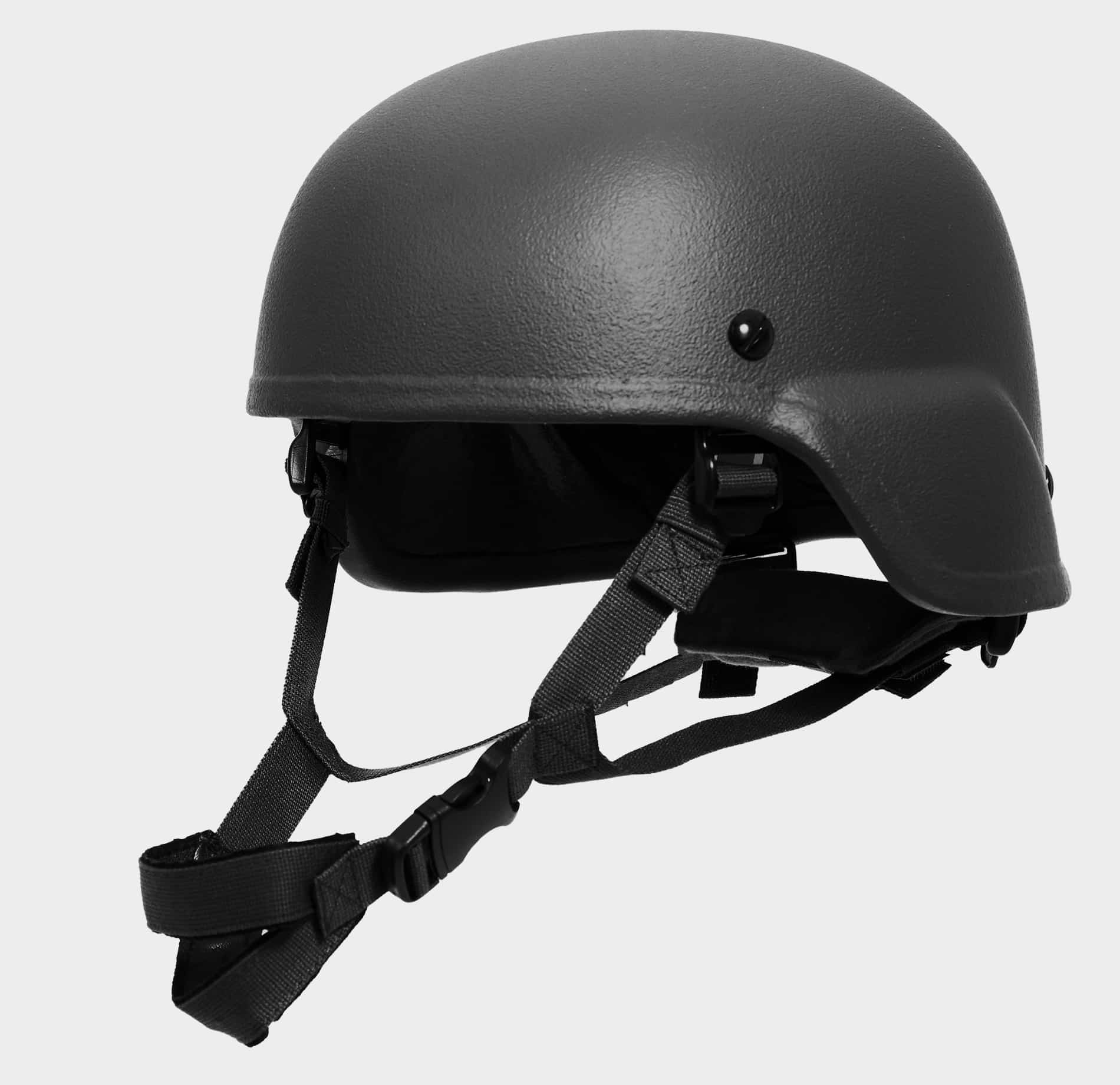
Aramid
NIJ Level IIIA
Rated to stop handgun rounds up to .44 Magnum
Maximum Coverage with Minimalist design
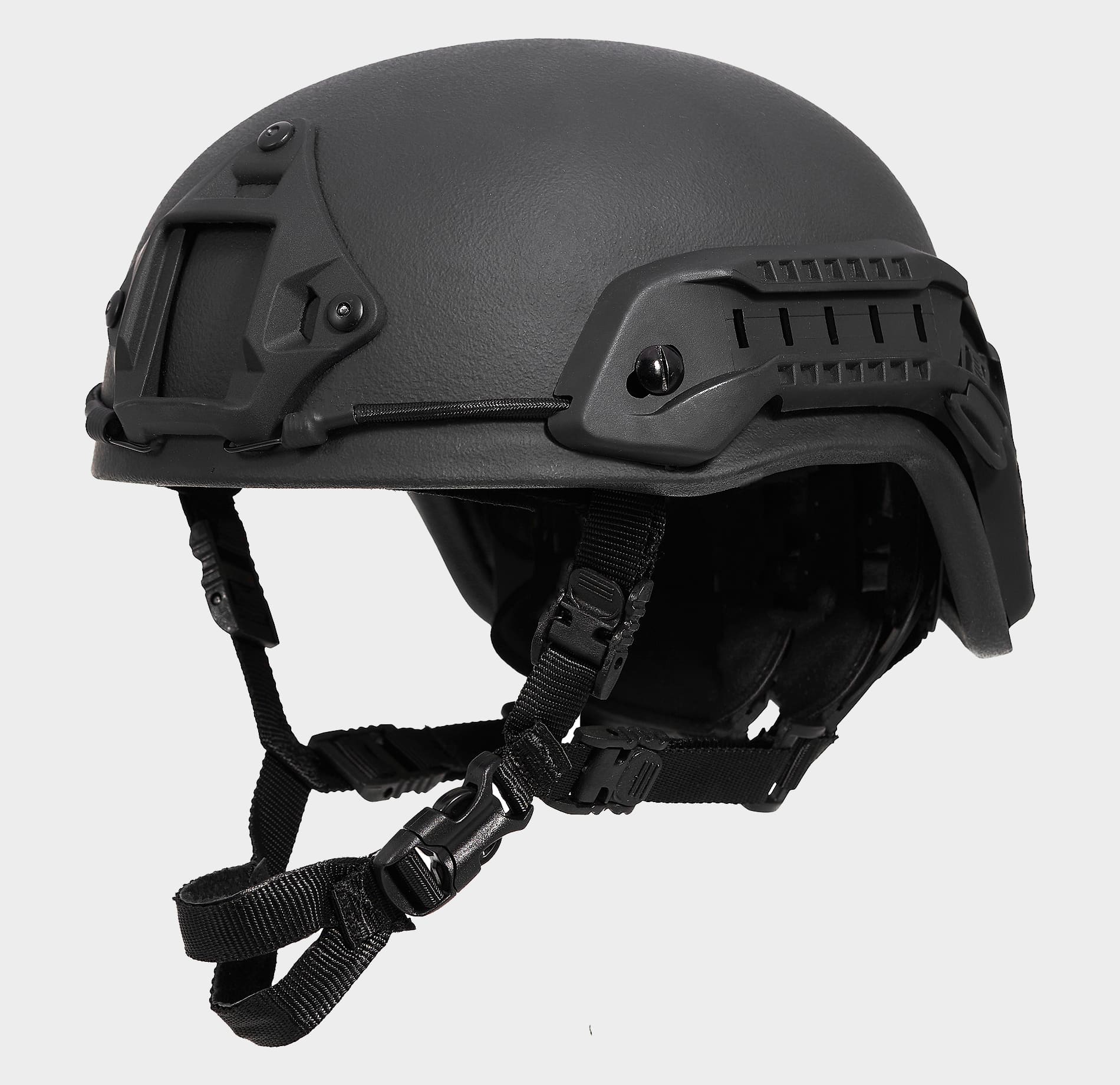
Aramid
NIJ Level IIIA
Rated to stop handgun rounds up to .44 Magnum
NVG mount and side rails
Ammunition Protection:
To explore what happens when a ballistic helmet is hit by a bullet, we need to consider the type and caliber of the bullet it is hit with, and the distance the bullet was fired from. A heavier bullet, fired from point-blank range, will carry an immense amount of impact energy, which will be a lot more than a smaller bullet, fired from a longer distance.
Generally, modern ballistic helmets, including those used by the military, are made with Aramid fibers and are hence only rated to stop pistol calibers. Most ballistic helmets you find on the market will be rated at level IIIA. This means they are rated to stop up to a .44 Magnum at point-blank range.
So, does that mean that Ballistic helmets can’t stop rifle rounds, the actual threat that most soldiers and law enforcement officials face when wearing helmets? Well, Yes and No. There have been incidents where the ACH helmets used by the US military have stopped AK-47 rounds. However, those cases are rare. Mostly, any rifle round fired directly at a helmet will penetrate through it, even when fired from a decent range.
However, there aren’t any standards that measure the level of impact trauma that these helmets transfer to the wearer. One of the main reasons for this is that different people will be affected differently by impact trauma. It is like you see in boxing, where some fighters may be able to take massive punches, whereas some might get knocked out by relatively lighter punches. Moreover, there isn’t any consistency in the level of impact trauma even a person with a strong chin can take. So, in conclusion, it is very difficult to determine how a person will respond if they take a hit on their helmet.
Case Studies:
Ballistic helmets have saved the lives of soldiers and law enforcement officers on several occasions. They have allowed soldiers to survive the most inhospitable warzones, against all odds, protect their fellow combatants, and get home to their families.
One such story comes from 2012 when Staff Sgt. Ryan Frye, a combat engineer with the 1st Brigade Special Troops Battalion, was on a dismounted route clearance operation with two other soldiers in the village of Mushaki in the Ghazni Province of Afghanistan.
During their operation, they encountered five enemy fighters, who rounded the corner of a wall and opened fire on Frye and his team members. One of the soldiers named Burnside suffered fatal wounds, whereas Staff Sgt. Ryan Frye took a round from an AK-47 to his helmet while returning fire.
The bullet hit the left side of his helmet and was deflected. Still, the impact was quite strong, sending Frye to the ground and leaving him temporarily deaf. The shot from the 7.62 AK round, fired from less than 100 yards, would have been deadly, but the helmet saved Staff Sgt. Ryan Frye’s life, leaving him only with minor Abrasions and a bad headache.
Staff Sgt. Frye was able to return home and meet his daughter, who was born just a few days after he was shot.
Source: https://www.army.mil/article/137344/soldier_receives_helmet_that_saved_his_life
Conclusion:
So, in conclusion, modern ballistic helmets save lives and protect the most vital part of your body from Shrapnel. Bullets and Impact Trauma. Though Ballistic helmets can stop certain rifle rounds in the right conditions, they are only rated to stop handgun rounds. Moreover, even if they stop the bullet, the impact force of the bullet can still be quite damaging.
Overall, ballistic helmets can be very helpful in a combat situation, and they are as important as a bulletproof vest in a combat situation.




